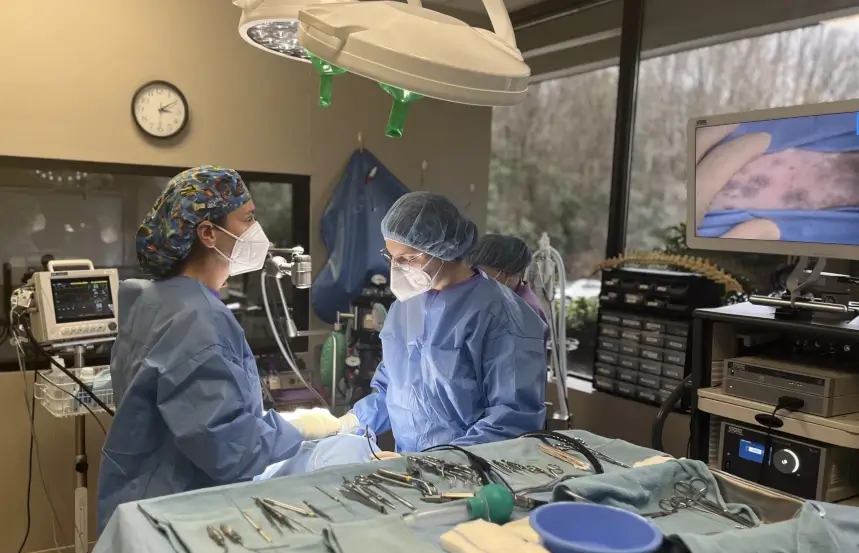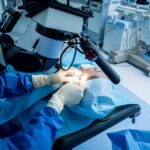
Pupil assessment is a vital part of neurological exams that can offer precise data about how the pupillary system and brain function. The size and responsiveness of pupils can provide different issues, including drug use, emotional states, and brain injuries and illnesses.
Understanding the significance of NPi (neurological pupil index) and percent change is essential for doctors to correctly interpret pupil measurement. A pupil’s size difference before and after a stimulus is referred to as percent change, and its algorithm is used to appraise pupils.
By utilizing the two estimations, clinical staff can acquire a more profound comprehension of their patients’ neurological conditions.
Role of Pupillometer in Pupil Measurement
Pupil estimating with a pupillometer is a standard technique in neurological assessments because the size and responsiveness of the pupils can yield important experiences in the sensory system and cerebrum’s working. Specialists can test pupil responsiveness by glimmering a light into the eyes and observing their blinking or widening.
Pupil size is ordinarily measured in millimeters. A cerebrum injury, abnormal growth, or certain medications are only a couple of neurological illnesses that may be shown by strange pupil size or responsiveness. Pupil estimating is as often as possible utilized with other neuro exam strategies to support diagnosing and treating neurological problems.
Benefits of Using Pupillometer for Various Jobs
Pupilary examination is still typically done by hand using a penlight. When there is a shift change or the patient cannot see well due to intubation, IV lines, or other obstructions, inter-rater error in these subjective assessments is very likely to occur.
- On the other hand, pupil size, shape, and light responsiveness measurements are precise and objective when using the portable automated pupillometer of Neuroptics VIP-200. The Neurological Pupil Index (NPi), a measurement measure, may be tracked and documented via the EHR.
- Pupil size and reactivity assessments conducted automatically have proven more accurate than manual methods, with good inter-rater reliability. For instance, quantitative pupillometry demonstrated a much greater positive predictive value and specificity for adverse outcomes in comatose cardiac arrest patients than manual readings.
- Furthermore, automated pupillometry successfully detects early alterations in intracranial pressure, constriction velocity treatment response to osmotherapy, and neurologic function. Additionally, it has been demonstrated that the NPi-200 or BrainCheck pupillometer is a valuable predictor of neurological deterioration in large hemisphere strokes and an early predictor following venoarterial extracorporeal membrane oxygenation.
Observing Basic Consideration Patients
Consistent observation of neurological status is foremost in basic consideration settings where patients might be in danger of neurological complexities. A pupillometer provides a harmless and effective method for checking pupillary reactions in fundamentally sick patients. By following changes in student size and reactivity after some time, medical care experts can survey neurological capability, distinguish indications of weakening, and guide therapy choices continuously, at last working on persistent results.
Upgrading Exploration and Propelling Information
Adopting neurological apparatuses like the NPi-200 adds to headways in research and the comprehension of neurological issues. Scientists influence these devices to conduct direct examinations, research the hidden instruments of neurological circumstances, investigate new treatment modalities, and survey the adequacy of intercessions. The information created from these examinations upgrades logical information as well as illuminates clinical work, prompting consistent improvement in understanding consideration.
Further developing Productivity and Work process
Notwithstanding their demonstrative and checking abilities, neurological apparatuses like the NPI Pupillometer further develop proficiency and work processes in medical care settings. The fast and painless nature of pupillary appraisals permits clinicians to perform assessments rapidly and flawlessly, saving significant time and assets. This effectiveness means upgraded patient throughput, diminished medical services costs, and worked on the generally speaking nature of care.
Conclusion
The adoption of neurological devices like the NPI pupillometer of NeurOptics addresses considerable headway in present-day medical services, offering medical care experts meaningful experiences into patients’ neurological status and improving the nature of patient consideration. From precise end and early ID to coordinating treatment decisions and pushing assessment, these gadgets are fundamental in dealing with relentless outcomes and driving unending improvement in neurological thought. As advancement keeps creating, what the future holds ensures extra types of progress in neurological contraptions, in the end provoking better outcomes for patients around the world.






